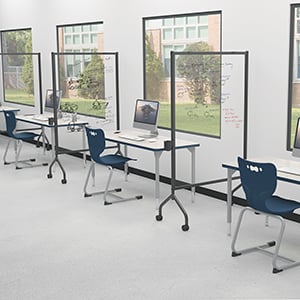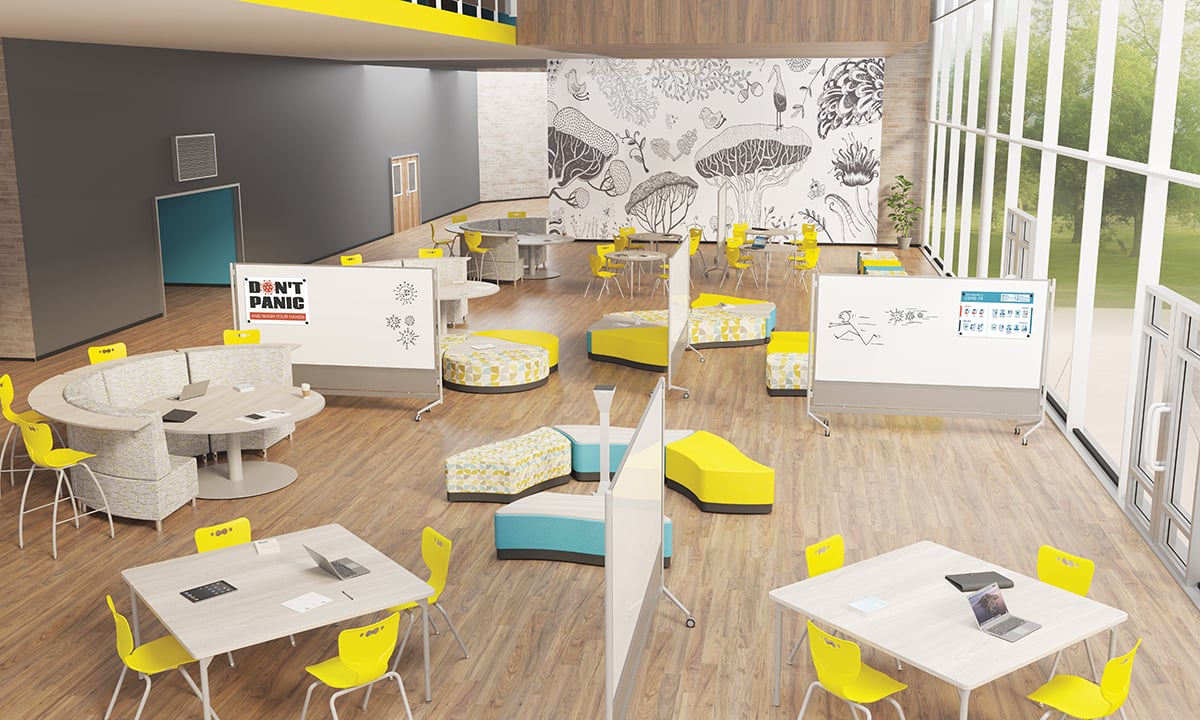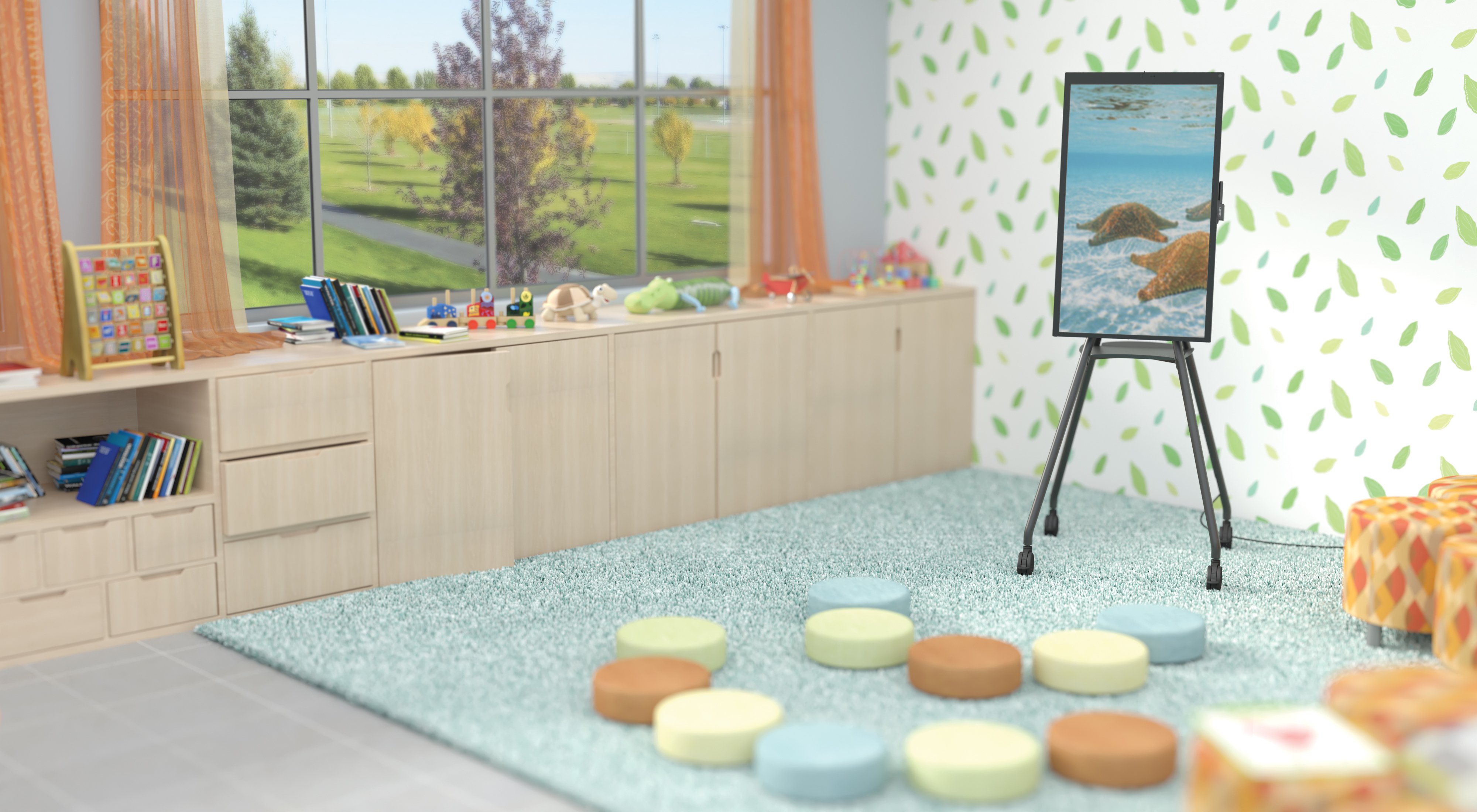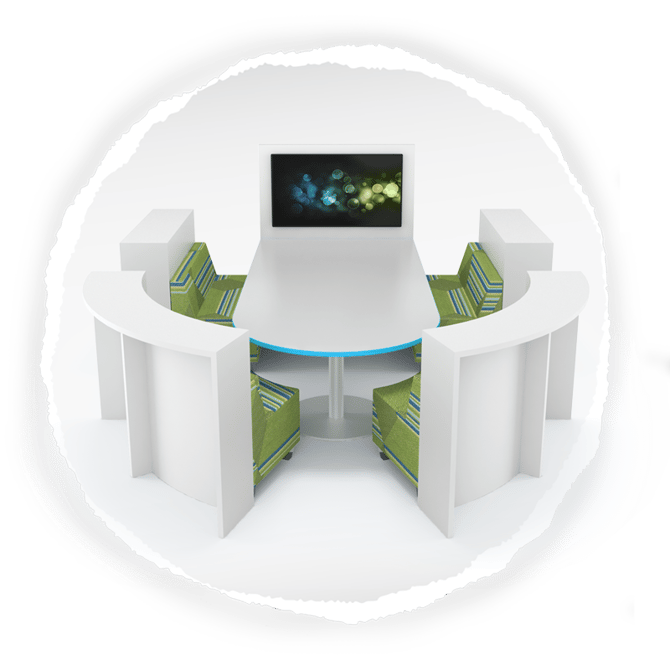More Predictions for Going Back to School in 2020
Posted by MooreCo Inc on May 16, 2020 10:31:02 AM

On April 24th, MooreCo put out a blog post about on how experts were predicting this year’s back-to-school season would differ from previous years because of Covid-19. As information continues to emerge about how the virus spreads and affects various populations, including children, we continue to stay on the heels of what to expect going forward.
More Predictions for Going Back to School in 2020
As a leader in classroom design for 35 years, we want to help our community stay informed of what ideas are being considered by federal, state, and local authorities for ways to keep students and teachers safe as schools contemplate reopening. The truth is that Covid-19 has already changed the way students are learning and parents are working in drastic ways, and it remains to be seen how long these changes will last. Here are a few more predictions for what we can expect for schools in the United States starting in fall.
Makeshift Classroom Spaces Will Be Necessary
Just this week, infectious disease expert and member of the White House Coronavirus Task Force, Dr. Anthony Fauci, said that schools will need to exercise caution while reopening. The American Association of Pediatrics has echoed this statement, with guidelines that state that social distancing in classrooms may be necessary, along with the need to reduce each class size for the fall semester. This will mean that many schools will need to create impromptu educational spaces.
Dividing classes to around eight students and separating desks six feet from apart is one suggestion being considered by many districts and superintendents. Desks that are easily mobile will be helpful, since in the next few months, collaborative learning environments may shift to a more individual-focused model.
Libraries, cafeterias, and gyms may be used to separate students far apart or to divide classes. In this case, mobile whiteboards and smart boards can be useful for keeping the learning going in rooms that aren’t a traditional class space. Soft-seated Dots or Seating Pads can be used for smaller children to learn and gather spaced apart, and tablet desks for older students can create the learning environment even in hallways or unconventional spaces. Mounted on casters, the Enroll™ Tablet Chair is ideal for rooms where seating design may need to be frequently changed.

Clear Partitions and Privacy Dividers May be Used to Prevent the Spread of Covid-19
As businesses begin to reopen worldwide, measures are being put into place to keep employees safe. Multi-use clear partitions are being used to separate cashiers from customers and factory workers on assembly lines. Some are even being used to divide employees in lunchrooms or as an alternative to cubical spaces in more open floor plans.
The Centers for Disease Control recently put out a set of guidelines to help schools determine when they will be ready to open. It’s a comprehensive checklist that suggests that schools “Encourage social distancing through increased spacing, small groups and limited mixing between groups, if feasible.” When space is a consideration, as it will be in smaller classrooms, partitions may be used to create more individual seating with clear boundaries.
These types of clear divider will also be useful in school settings to separate students and slow the spread of germs. The Essentials Mobile Whiteboard + Clear Panel from MooreCo can be used as a partition to provide separation in the classroom or makeshift learning space. These dividers are fixed on gliding casters, making them easy to move from place to place.

Staggered Scheduling and Hybrid Models Will be a Normal Part of Student Life
Many experts, journals, and articles continue to mention staggered scheduling and hybrid models for schools. This proposal means that some students are on a part-time schedule or that some learn remotely. Longer school years and adjusted calendars are also being considered to help reduce the effects of absenteeism that may result from Covid-19. These solutions may help to create distance in classrooms, but many are wondering how possible it will be, when considering the schedules of working parents. Not all students have access to internet access at home or the software that can allow them to work remotely. This may cause some students to fall behind. Online and remote learning has been an adjustment for teachers, as well.
The answers on how to merge these solutions so that they work for every student and parent won’t be easy. We want to stress again the importance of having educational software and reliable internet access, if available. Tools that help students work remotely like i3LearnHub that partners well with Google Classroom can help students and teachers communicate. For parents who find themselves working remotely to help accommodate their children’s varied school schedule, companies will need do everything they can to provide their teams with the best tools to work remotely.
Many universities have already determined that they will be conducting classes online for the fall semester. This means that teachers and students must have compatible technology to continue to learn without interruption. Interactive smart boards like the i3Touch can help teachers make the transition to online classes easier, with shared screen capability and Zoom videoconferencing.

Educators, Students, and Classroom Designers Will Need to Work Together to Find Solutions
We can look to Mazlow’s Hierarchy of Needs to demonstrate how children’s development may be hampered by the current crisis. Students and their parents will need to feel safe in schools come fall. Kids and parents will need to work with educators and designers to find a solution that fits the current situation. This means that with distancing, hygiene, and safety considerations in place, each parent and educator will need to assist students in continuing to thrive by helping them get their needs met and following their lead for an optimal learning model.
The American Federation of Teachers put out a set of guidelines recently on how to safely and securely prepare schools for reopening. They echo Kurani’s assessment that the future success of students in the midst of the pandemic will require collaborative planning on the part of the entire community.
It’s likely that districts and schools will need to help their individual communities of students and parents find solutions that help them keep learning and working. For teachers, tools to help organize and stay mobile throughout classrooms may be helpful. The Compass Cabinets, for example, can store a variety of learning materials or even tools to maintain hygiene like gloves, disinfectant wipes, and hand sanitizer.
When hybrid classrooms are in place, hybrid furniture pieces that double as seating and software can open the classroom from school to individual student’s homes. Designed under our i3 Environments principles: interactive, integrated, and inspiring, the Cocoon Media Space is an upscale solution combining technology and functionality. This means that some students could be distanced in person around an interactive screen in a library, while other students learn at the same table virtually from home.

We’re Here to Help…
Like you, we eagerly await the conclusion to the current situation and are searching actively for solutions that benefit our community and families. We are here to help your school or workplace prepare for the changes that will take place this fall as school resumes in an adjusted style. Working together and thinking creatively will provide the answers we seek, and we commit to working with districts, parents, and employers so that our nation’s students can continue to thrive. Contact us if you have any questions about school design and Covid-19. We are here to help.
Topics: Design, Active Learning, Human Development, Clean Living, Working from Home, Learn from Home, Technology, Covid-19
